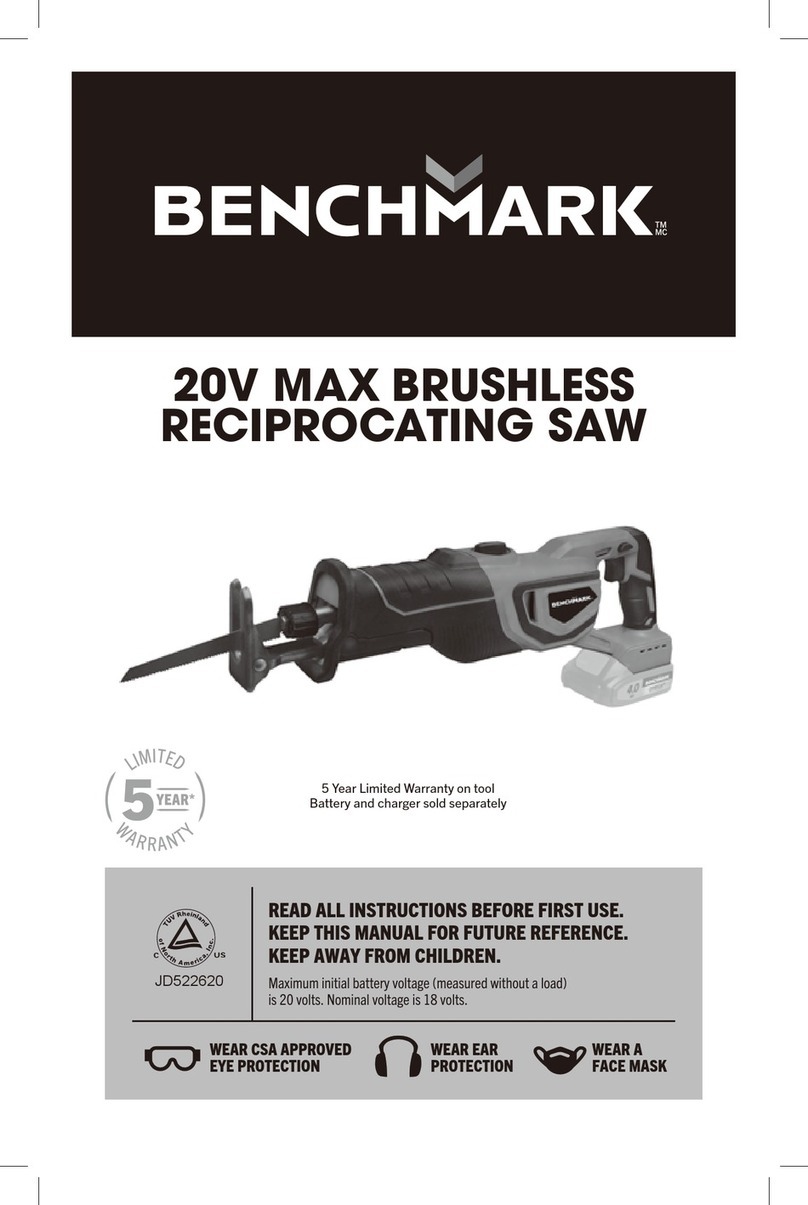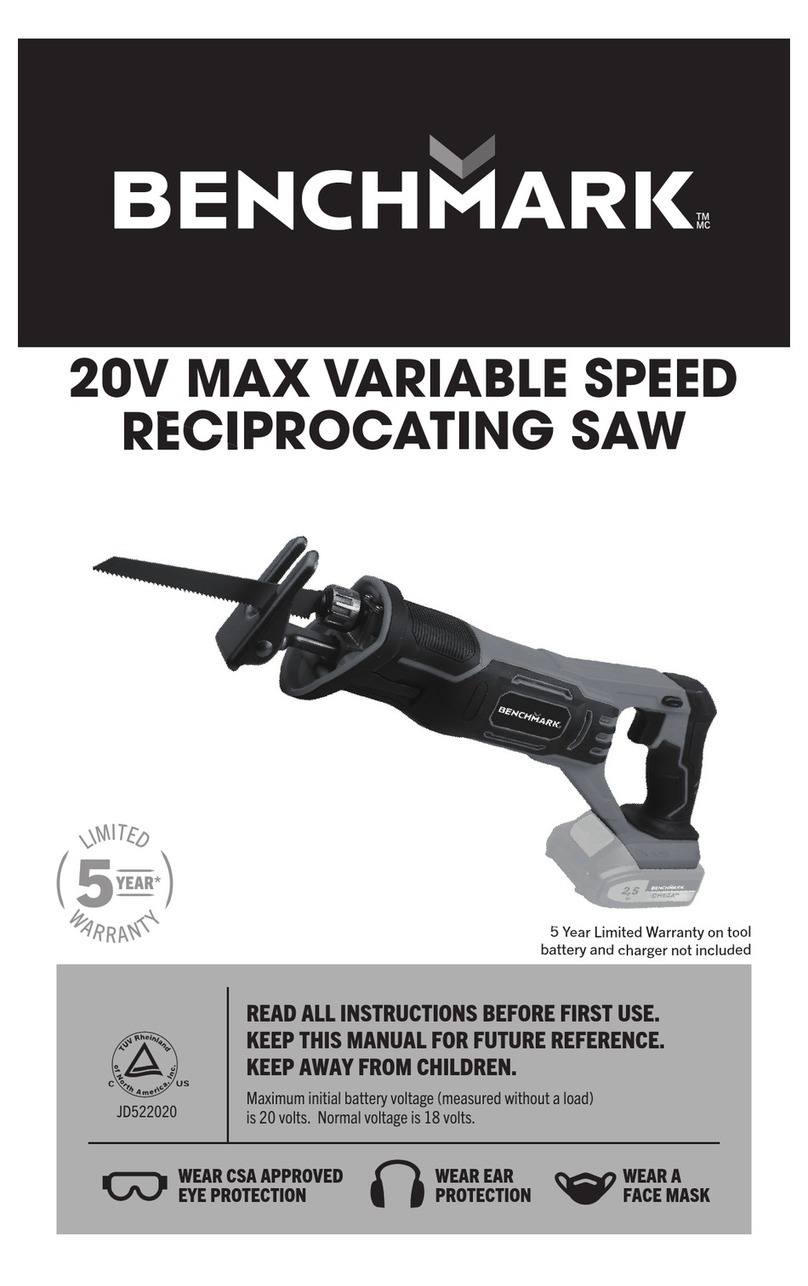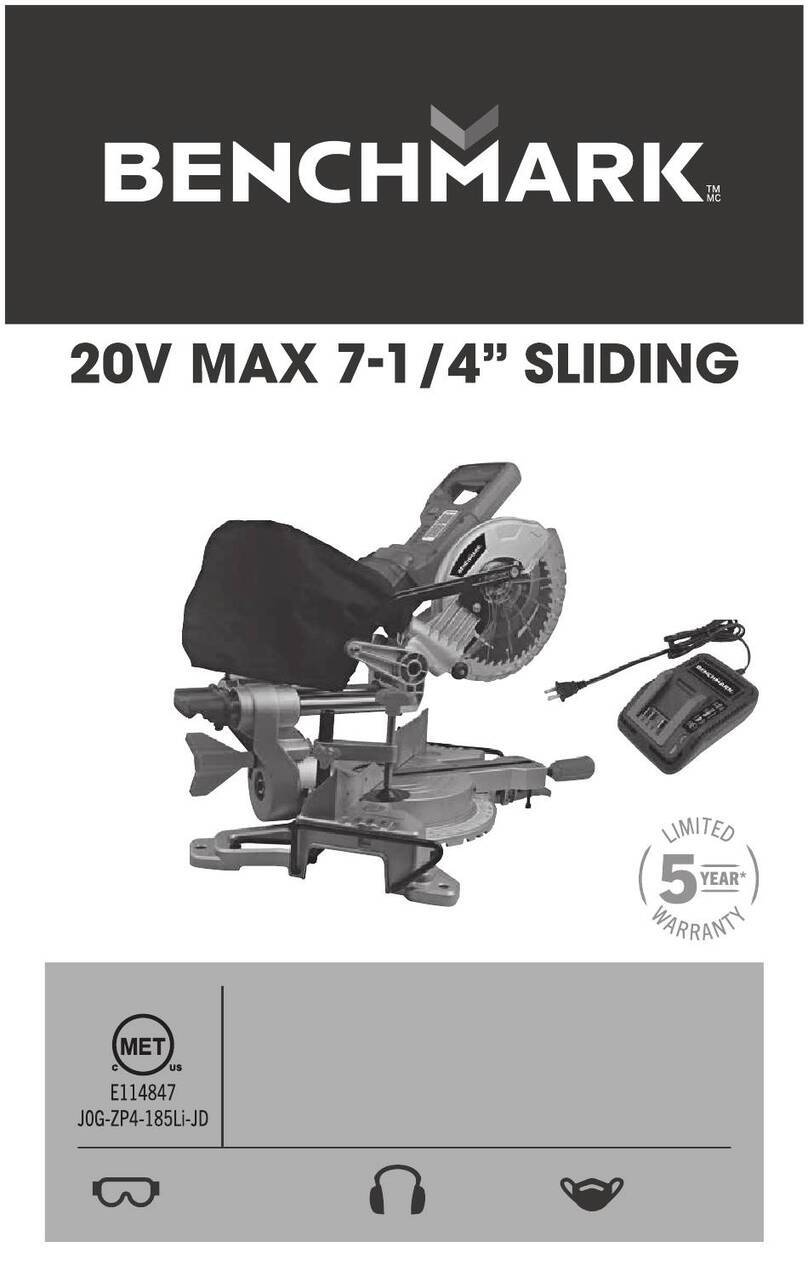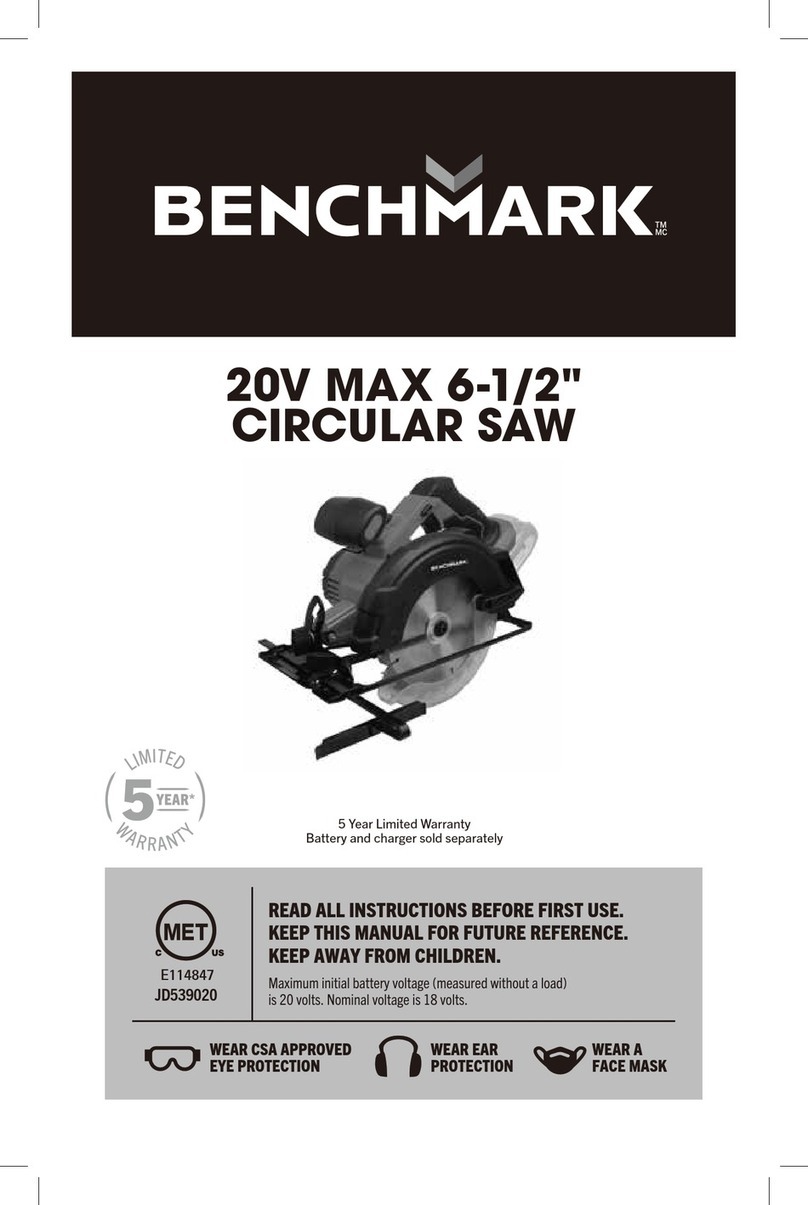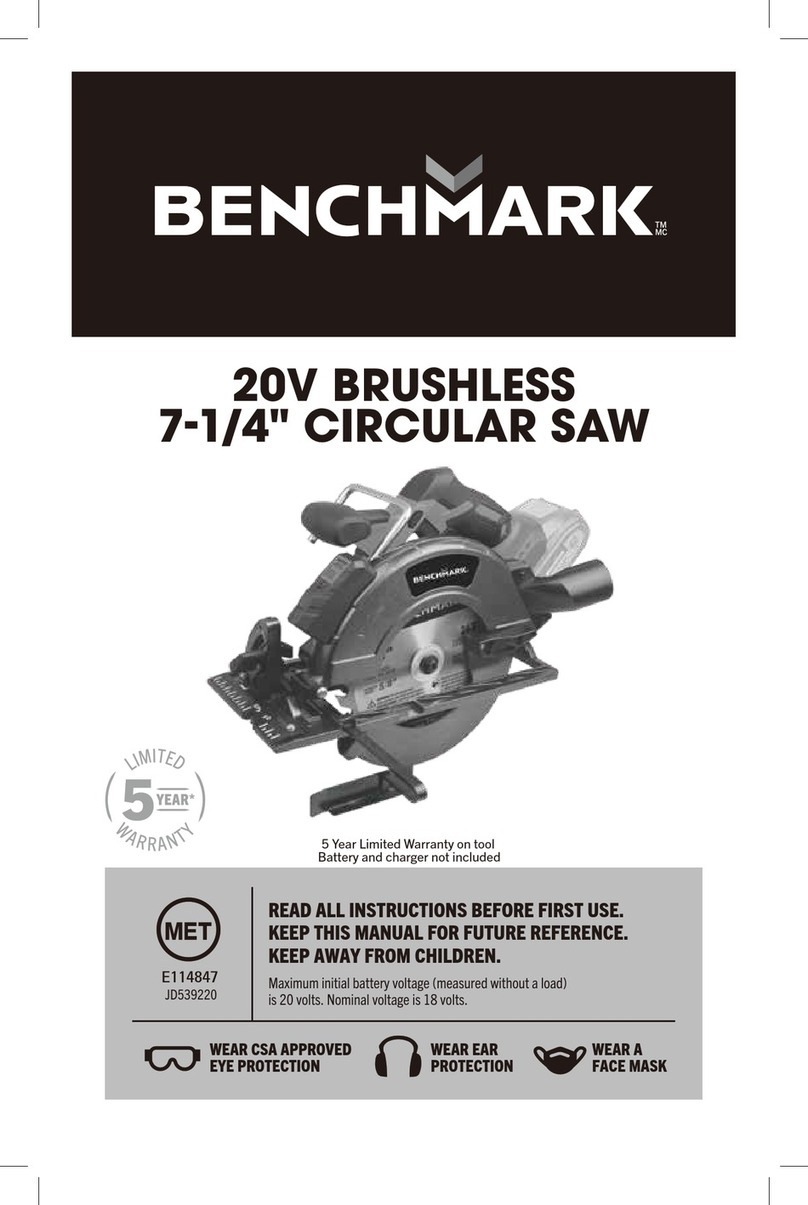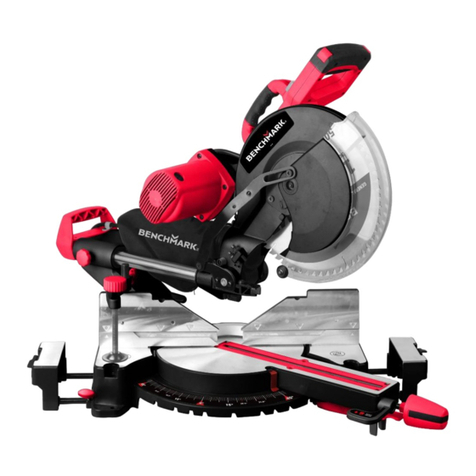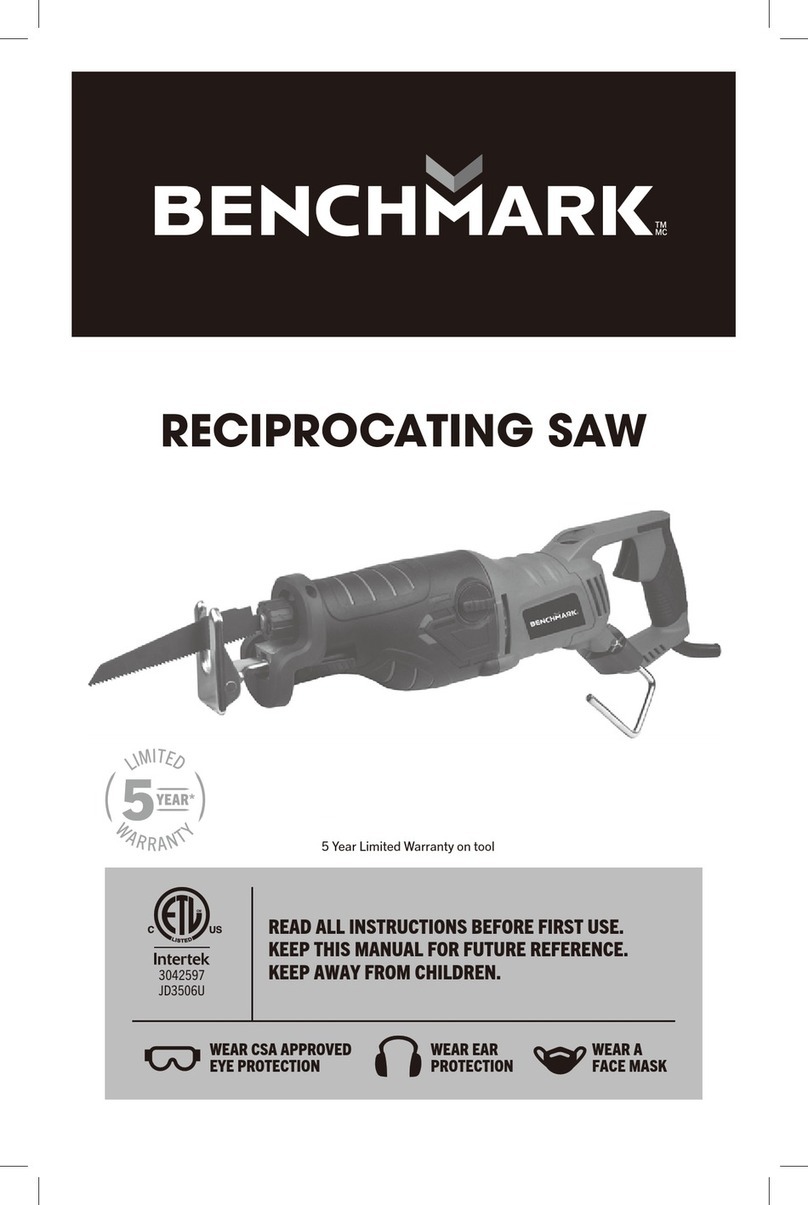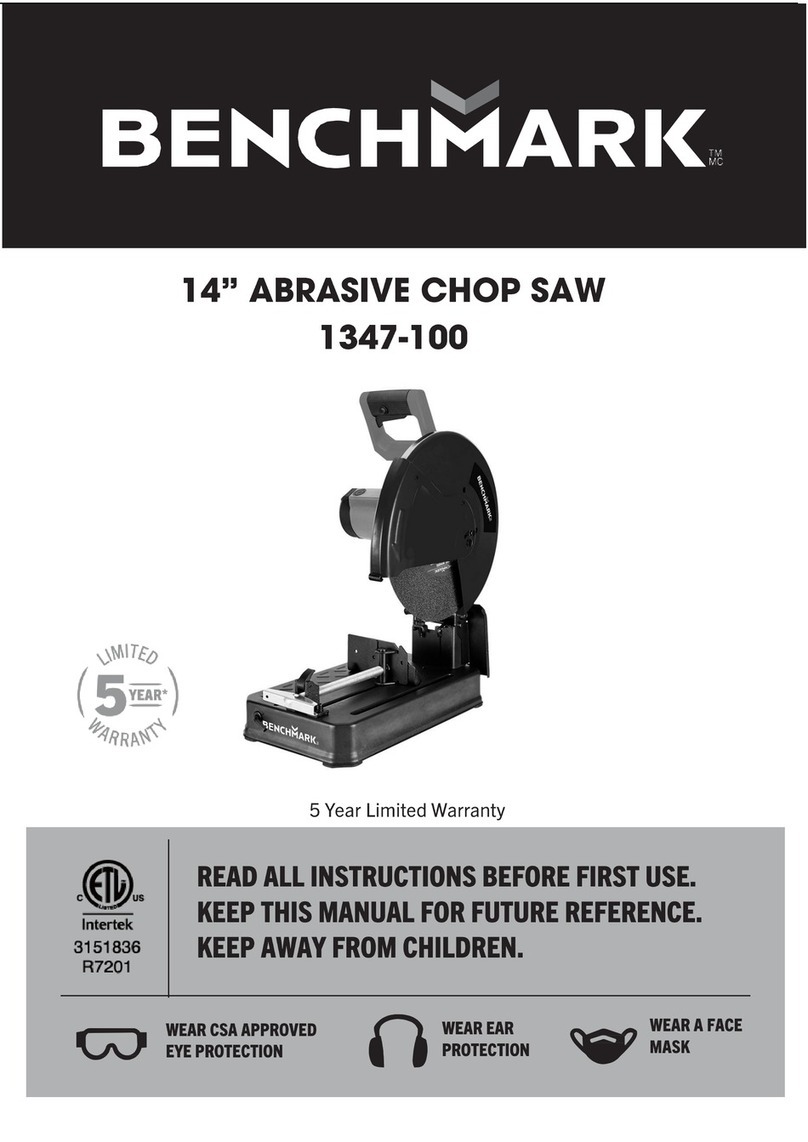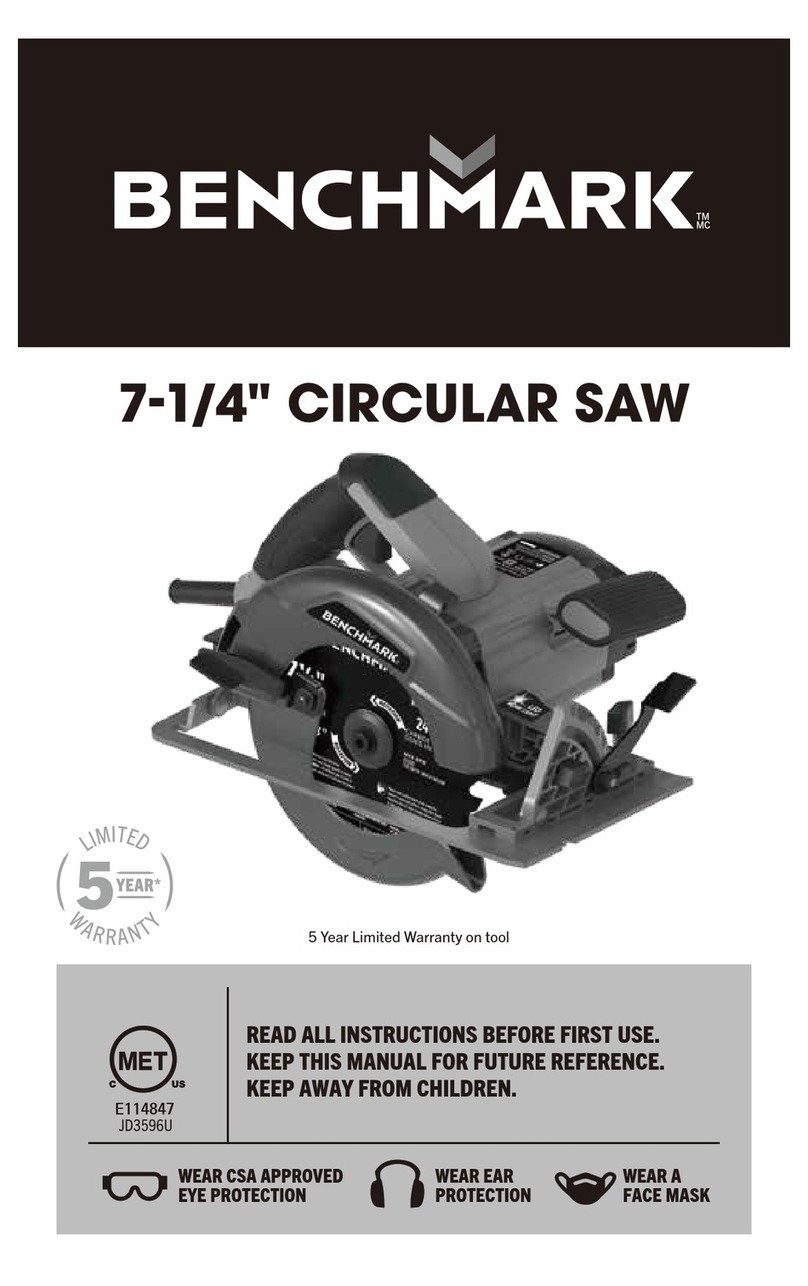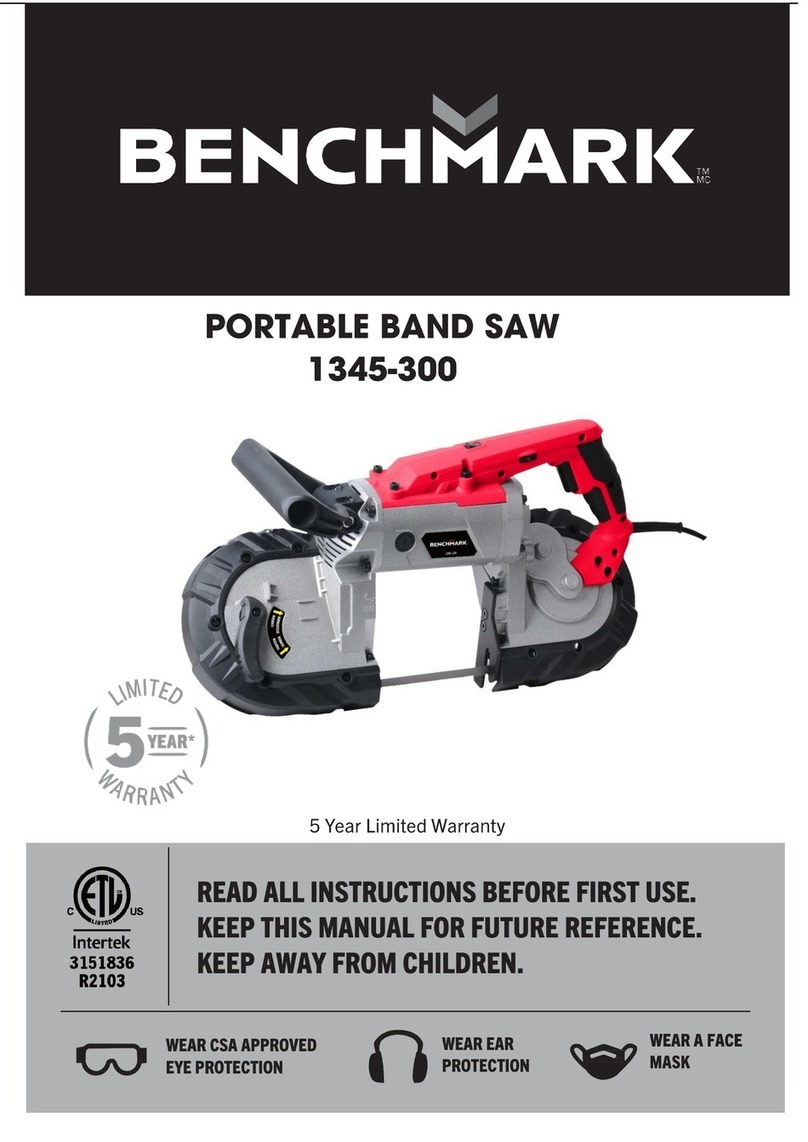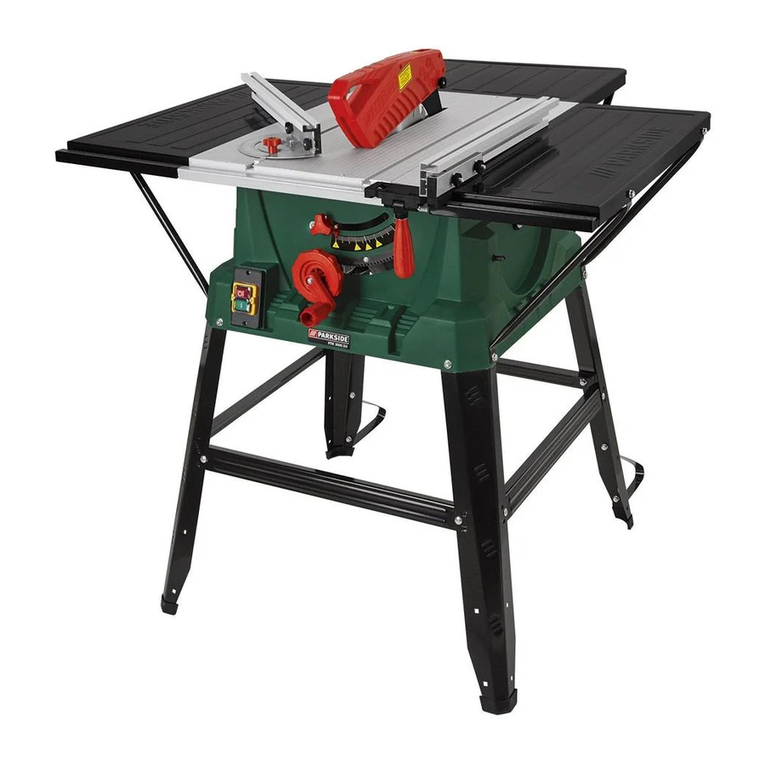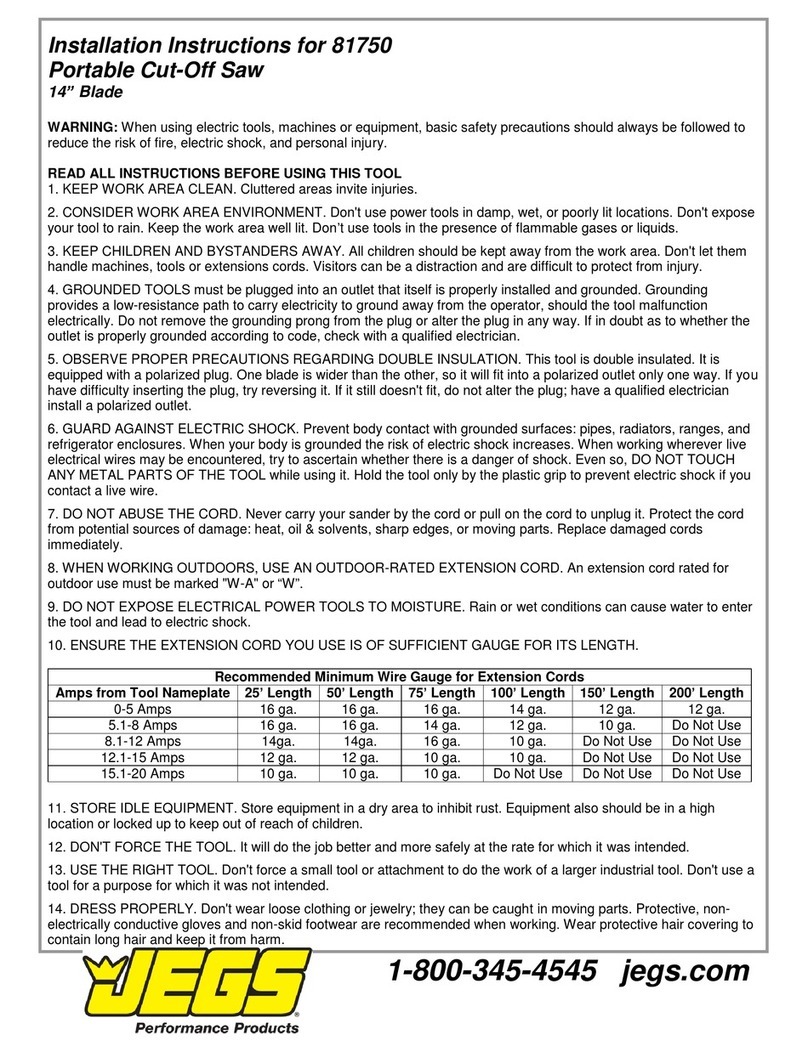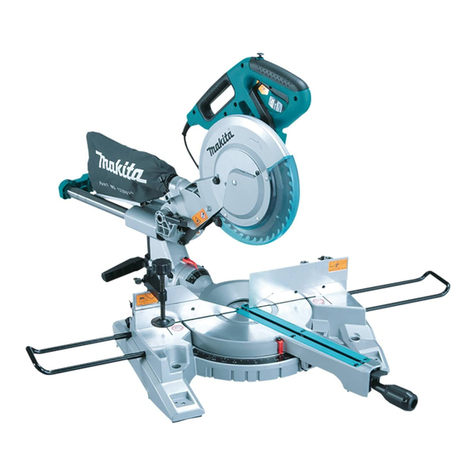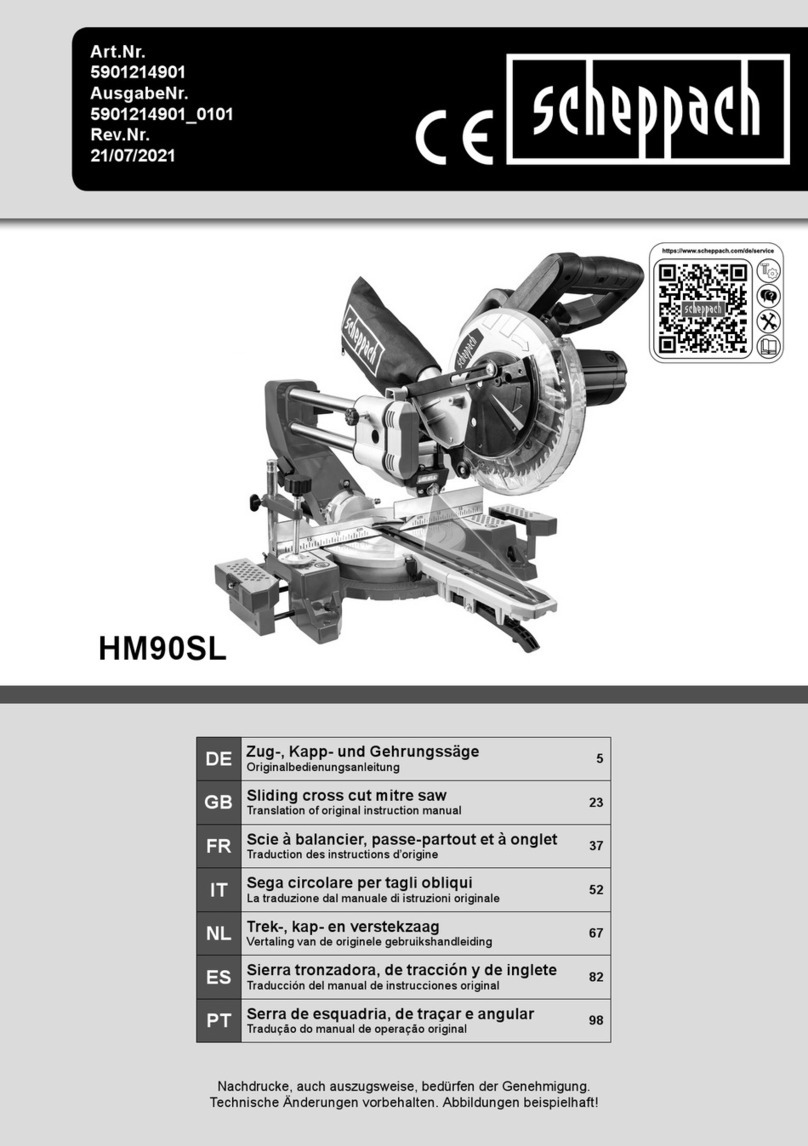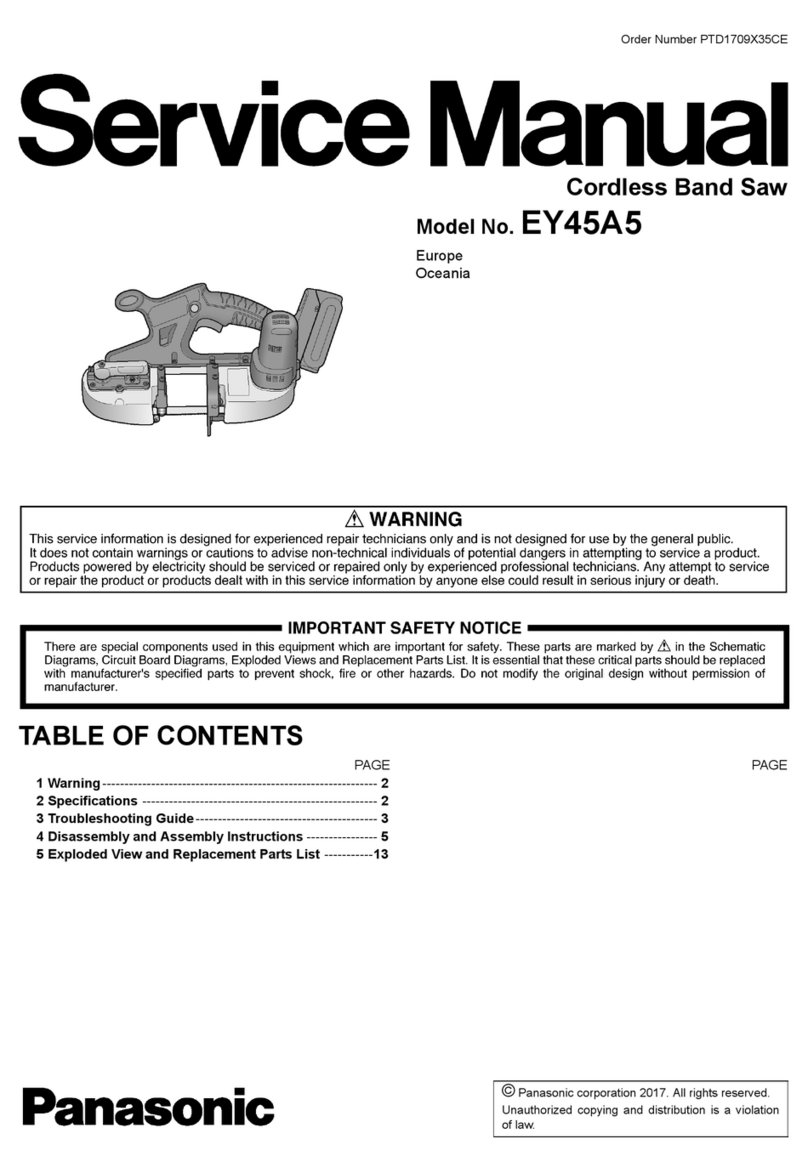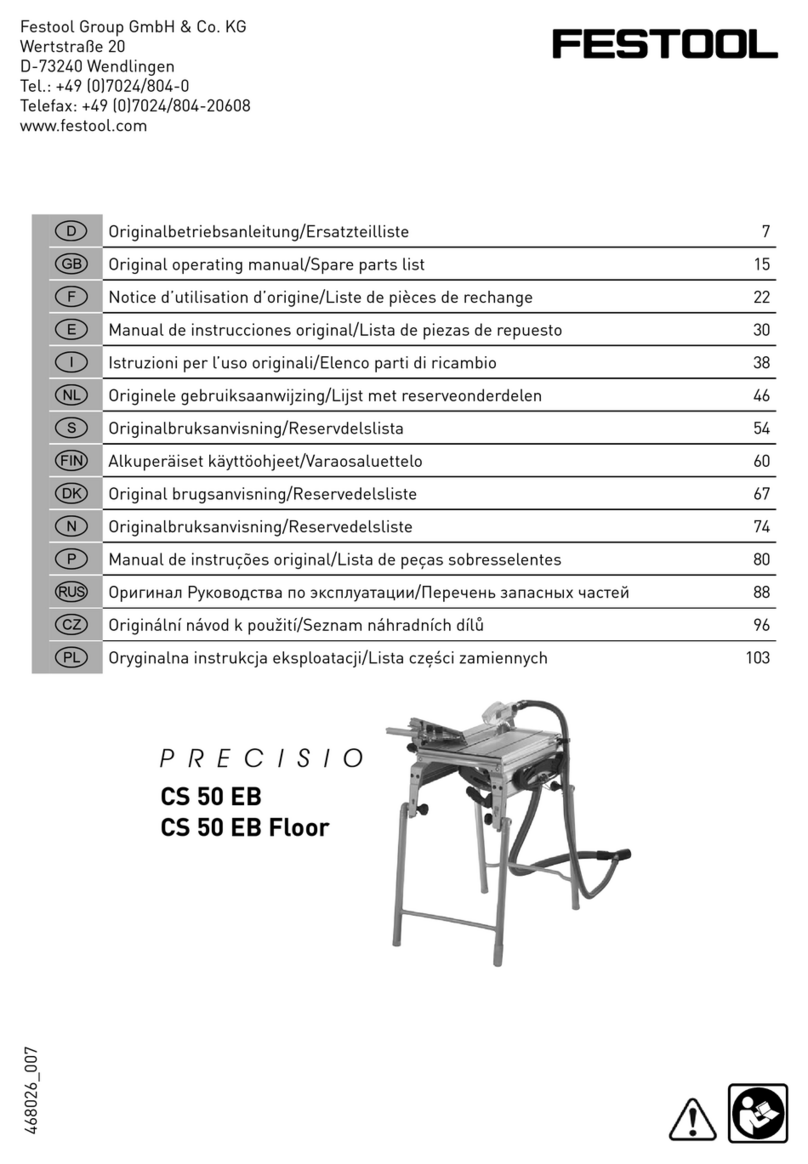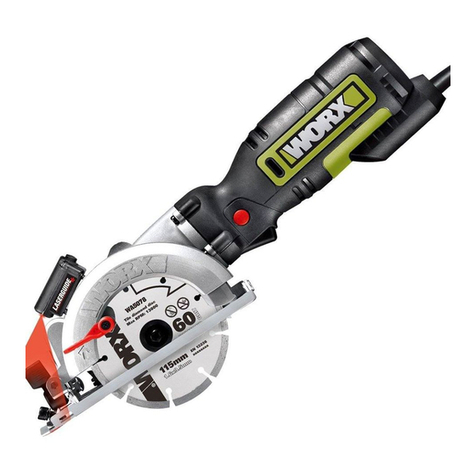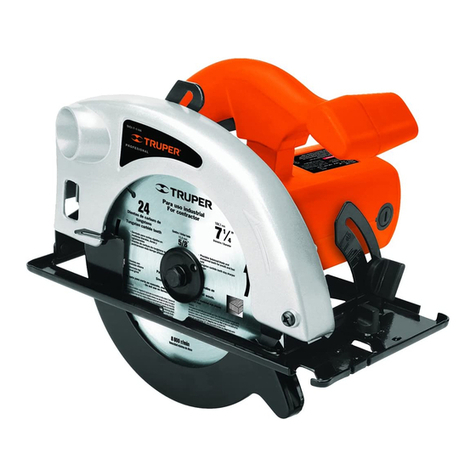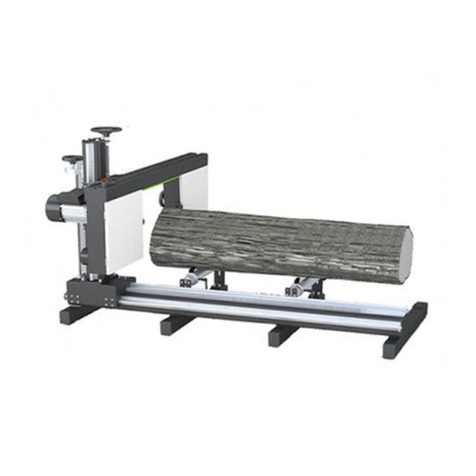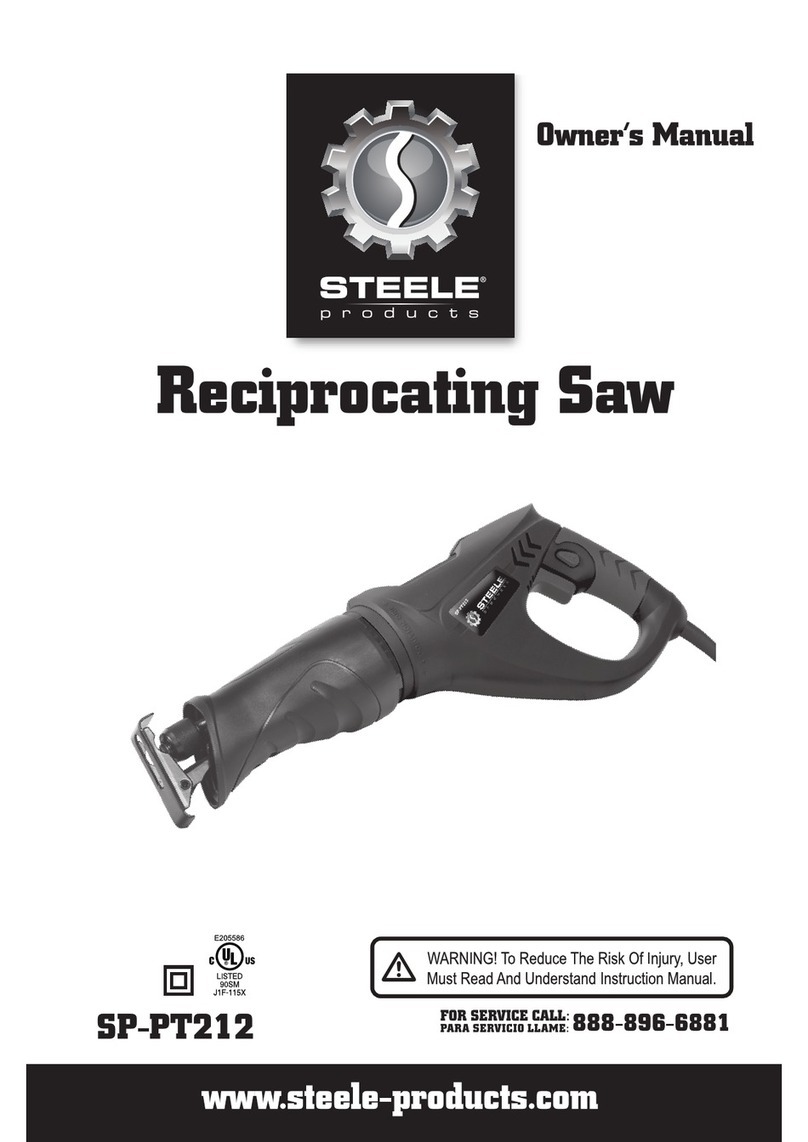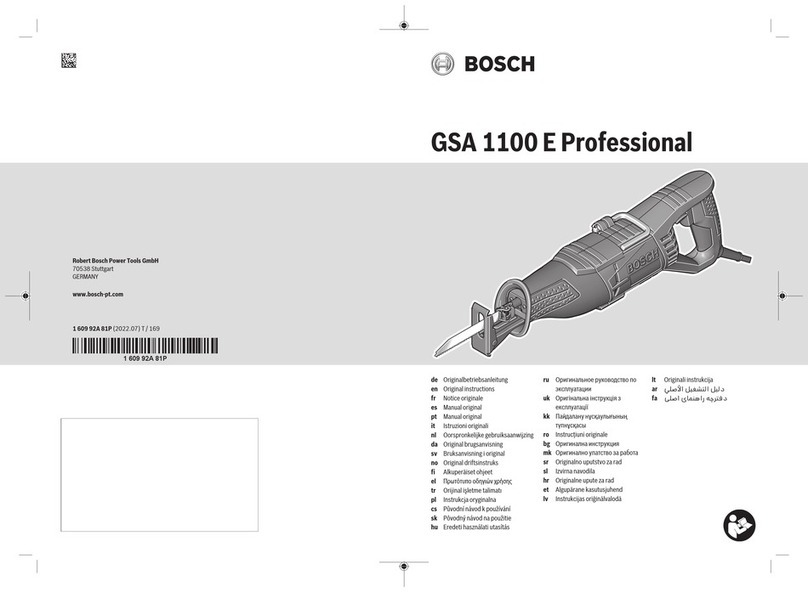
Keep guards in place and in working order.
Remove adjusting keys and wrenches. Form habit of checking to see that keys and adjusting wrenches are removed
from tool before turning it on.
Keep work area clean. Cluttered areas and benches invite injuries.
Don’t use in dangerous environments. Don’t use power tools in damp or wet locations, or expose them to rain or
snow. Keep work area well lighted.
Keep children away. All visitors should be kept at a safe distance from work area.
Make workshop childproof with padlocks, master switches, or by removing starter keys.
Don’t force the tool. It will do the job better and safer at the rate for which it was designed.
Use the right tool. Don’t force tool or attachment to do a job for which it was not designed.
Wear proper apparel. Do not wear loose clothing, gloves, neckties, rings, bracelets, or other jewellery which may get
caught in moving parts. Non-slip footwear is recommended. Wear protective hair covering to contain long hair.
Always use safety glasses. Also use face or dust mask if cutting operation is dusty. Everyday eyeglasses only have
impact-resistant lenses, they are not safety glasses.
Secure work. Use clamps or vise to hold work when practical. It’s safer than using your hand and it frees both hands
to operate tool.
Don’t overeach. Keep proper footing and balance at all times.
Maintain tools with care. Keep tools sharp and clean for best and safest performance. Follow instructions for
lubricating and changing accessories.
Disconnect tools before servicing; when changing accessories, such as blades, clamps, extensions, and the like.
Reduce the risk of unintentional starting. Make sure the switch is in the OFF position before plugging in.
Use recommended accessories. Consult the owner’s manual for recommended accessories. The use of improper
accessories may cause risk of injury to persons.
Never stand on tool. Serious injury could occur if something unintentionally comes into contact with the cutting tool.
Check damaged parts. Before further use of the tool, a guard or other part that is damaged should be carefully
checked to determine whether it will operate properly and perform its intended function - check for alignment of
moving parts, binding of moving parts, breakage of parts, mounting, and any other conditions that may affect its
operation. A guard or other part that is damaged should be properly repaired or replaced.
Direction of feed. Feed work into a blade or cutter against the direction of rotation of the blade or cutter only.
Never leave tool running unattended. Turn power off. Don’t leave tool until it comes to a complete stop.
This compound mitre saw is a double-insulated tool.To reduce the risk of electric shock, double-insulated tools
are equipped with a polarized plug (one blade is wider than the other). This plug will fit into a polarized outlet only
one way. If the plug does not fit into the outlet properly, reverse the plug. If it still does not fit, contact a qualified
electrician to install a polarized outlet. Do not change the plug in any way.
Double insulation eliminates the need for the three-wire grounded power cord and grounded power supply system.
Before plugging in the tool, BE SURE that the outlet voltage supplied is within the voltage marked on the tool’s
data plate. DO NOT use “AC only” rated tools with a DC power supply. Avoid body contact with grounded surfaces
such as pipes, radiators, ranges and refrigerators. There is an increased risk of
electric shock if your body is grounded.
DO NOT expose power tools to rain or wet conditions and do not use power tools in
wet or damp locations. Water entering a power tool will increase the risk of electric
shock. This tool is intended for indoor use only.
If operating a power tool in damp locations is unavoidable, ALWAYS USE a power
supply for your tool that is protected by a Ground Fault Circuit Interrupter. ALWAYS
WEAR electrician’s rubber gloves and footwear in damp conditions.
